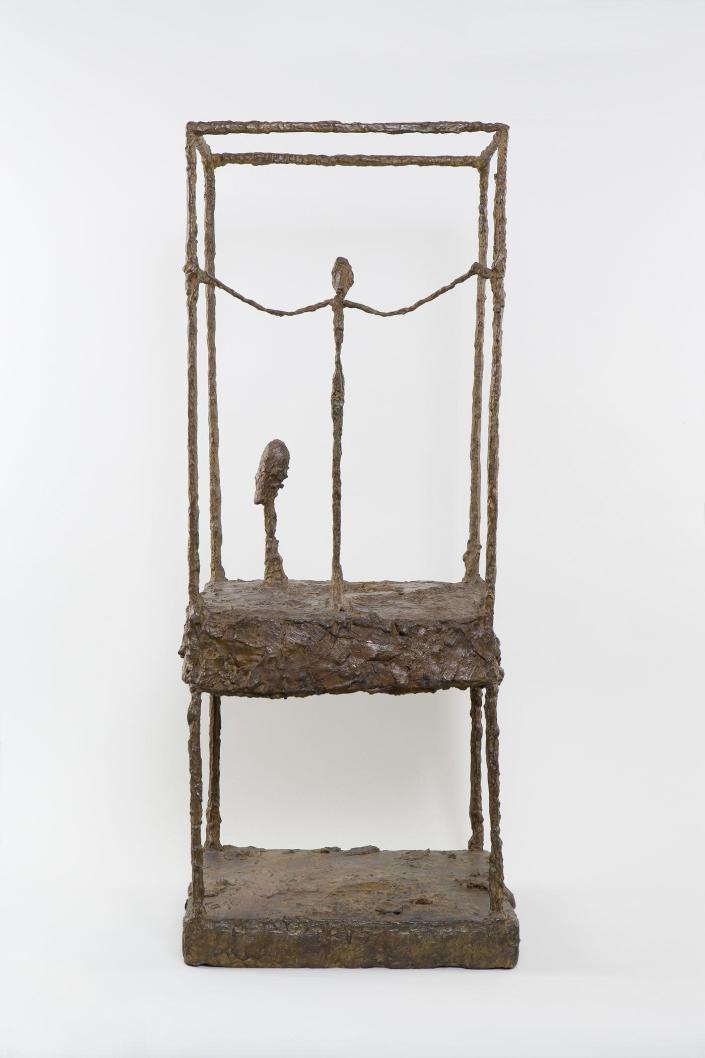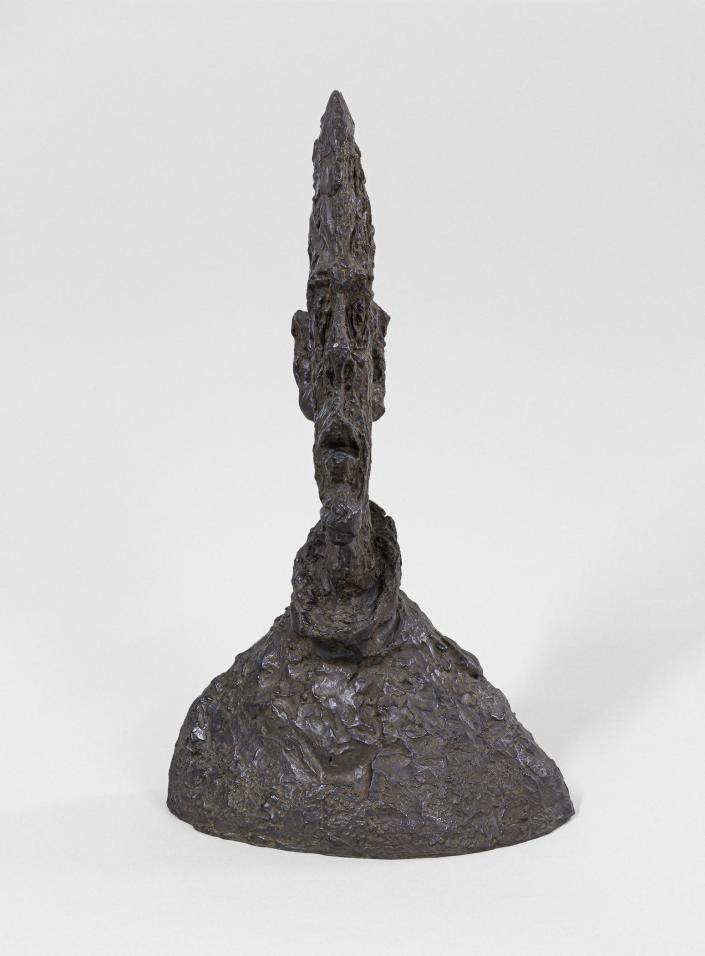
The artistic process is something that often eludes people. It’s not only the artist’s burning desire to create that can be confusing to people, it’s the commitment to research and the drive to keep going that is often obscured by the sometimes truly abstract way that artists can make things.
First, they come up with an idea or series of ideas that is informed by everything they have made up to that point. And then they carry through on the creation of that idea without knowing if anyone will ever want to see it. This is a career and life choice fraught with peril.
An exhibition that explores that perilous process and the life of a person who was vehemently committed to their art is on view now at The Cleveland Museum of Art. “Alberto Giacometti: Toward the Ultimate Figure,” is a visually stunning exhibition that engages you at every turn.
Giacometti is widely regarded as one of the most influential artists of the 20th century. His distinctive style featured thin, elongated figures animated by surfaces that have been whittled, carved, modeled and then re-whittled, -carved, etc., to a seemingly infinite degree. The artist made impactful sculptures that are instantly recognizable as “Giacometti.”
What’s exciting about this exhibit is the way in which Giacometti and his process have been brought to life. The show features 60 works that include sculpture, painting and drawing. Also featured are photos by a variety of famous photographers who visited Giacometti in his studio, as well as one short film. You get a sense not only of the artist’s creative process, but also of him as a person. You also become aware of the influence the artist had on his contemporaries and the generations of artists who have been born since.


Alberto Giacometti 1901-1966, was a Swiss sculptor, painter, draftsman and printmaker. Beginning in 1922, he lived and worked mainly in the Montparnasse area of Paris. He maintained the same Paris studio for 40 years living, essentially, in squalor, no matter how much commercial success he gained, which in his lifetime was considerable.
The artist’s singular focus on researching the human figure was part of his reasoning for staying in one studio his entire professional life, seeking to lessen the trappings of the world that could take him away from his ultimate task.
Further, living through the atrocities of two world wars and the start of the Cold War contributes to why Giacometti is often associated with existentialism — a movement that questions the nature of the human condition. You can see this perspective in the work he made, through the overworked and edited surfaces of his sculptures and the geometric lines and planes of his drawings.
Certainly, what stands out in this exhibition are works that many may not have expected to be part of Giacometti’s studio practice. Several landscape drawings, paintings and lithographs are included in the exhibit. Like his famous sculptures, these works are gritty, uniquely marked displays of the artist’s hand.
In one oil-on-canvas landscape of what appears to be a garden gate and a tree, the artist has cut from an older piece of canvas to make the painting and left it rough without finished edges.

Another work, the lithograph “Landscape in Stampa,” highlights the drawing style Giacometti is so well-known for. Thoughtful yet seemingly quick gestural lines make up the composition. Giacometti was known for taking hours and hours to sculpt and to draw his chosen subject, so though this work may look like something done rapidly with lots of movement, it’s likely something that took a great deal more time to make and was certainly not the only landscape in Stampa he created.
One of the key takeaways from this exhibit was that the artist strove to include the earth and landscape in his portraits. For example, in his work “Bust of a Man (Lotar II),” a bronze from 1964-65, the subject looks to be a figure and head that is also part of a landscape. It is this distillation of what he chose to depict that helped catapult Giacometti to a special level of stardom during his life and gave him a perhaps unprecedented level of respect from his peers.

“Walking Man I,” 1960, is a 180.5 x 27 x 97 cm bronze sculpture and “Tall Woman IV,” 1960–61, is a 270 x 31.5 x 56.5 cm sculpture also made from bronze. Both of these works display much of the extremely edited style that the artist’s sculptures are best known for. Both were completed near the end of his life, and it’s enlightening to view these pieces in the context of his previous work.

Busts, as well as small figures, were made and are used throughout the 12 sections of the exhibitions to describe the life and work of the artist. It’s impressive to see through this exhibition how Giacometti worked at times for years at an extremely small size and then found his way to these oversize and grandiose depictions of the human form.
Along with the works of art by Giacometti, there are several photographs made by world-famous photographers who would visit him in his Paris studio.
A 1951 image by American photographer Gordon Parks, “Alberto Giacometti in His Studio,” is one such example. In the image Giacometti sits surrounded by sculptures. The sculpted figures almost appear to move as well as standing erect. A large sculpted hand juts out from the left side of the picture plane in the foreground, and the top of a large bust peeks out in the lower central portion of the image. Both objects sit between the viewer and where the artist is, seated on a chair smoking a cigarette. All of the elements in this image speak to Giacometti’s work and attempt to holistically encompass a sense of what the artist was trying to relate.

“Alberto Giacometti: Toward the Ultimate Figure” is a special opportunity to experience the work of one of the most influential artists of the past 150 years on both a grand and an intimate scale. It not only shows what made him so famous, but also offers keen and important insights into, and examples of, what Giacometti did to make work and how he strove to make himself a better artist.
This is an outstanding, thoughtful, curated exhibit worthy of the attention of any fan of visual art.
Anderson Turner is director of the Kent State University School of Art collection and galleries. Contact him at [email protected].
Details
Exhibit: “Alberto Giacometti: Toward the Ultimate Figure”
Place: The Cleveland Museum of Art
Dates: Through June 12
Hours: 10 a.m. to 5 p.m. Tuesday through Thursday; 10 a.m. to 9 p.m. Friday; 10 a.m. to 5 p.m. Saturday and Sunday; closed Monday
More information: clevelandart.org/
This article originally appeared on Akron Beacon Journal: Review: ‘Alberto Giacometti: Toward the Ultimate Figure’ is visually stunning art exhibit in Cleveland
